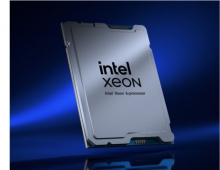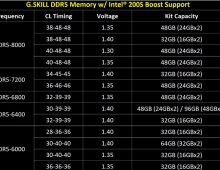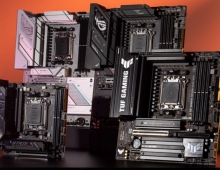
Intel's Upcoming Ivy Bridge Microprocessors to Support PCI Express 3.0
Intel's next-generation microprocessor code-named Ivy Bridge will, support the next-generation PCI Express 3.0 interconnection, according to presentation slides published by a website.
The PCIe 3.0 offers a bit rate of 8GT/s and a interconnect performance bandwidth is doubled over PCIe 2.0. Although the PCIe 2.0 bit rate is specified at 5GT/s, with the 20 percent performance overhead of the 8b/10b encoding scheme, the delivered bandwidth is actually 4Gb/s. PCIe 3.0 removes the requirement for 8b/10b encoding and uses a more efficient 128b/130b encoding scheme instead. By removing this overhead, the interconnect bandwidth can be doubled to 8Gb/s with the implementation of the PCIe 3.0 specification. This bandwidth is the same as an interconnect running at 10GT/s with the 8b/10b encoding overhead. In this way, the PCIe 3.0 specifications deliver the same bandwidth, but without the prohibitive penalties associated with 10GT/s signaling, such as PHY design complexity and increased silicon die size and power. The PCIe 3.0 architecture is also fully compatible with prior generations of this technology, from software to clocking architecture to mechanical interfaces. That is to say PCIe 1.x and 2.x cards will plug into PCIe 3.0-capable slots and operate at their highest performance levels. Similarly, all PCIe 3.0 cards will plug into PCIe 1.x- and PCIe 2.x-capable slots and operate at the highest performance levels supported by those configurations.
The PCI Express 3.0 may enable higher performance graphics cards for consumers as well as high speed solid-state drivers for servers.
Along with PCI Express 3.0 support, Intel's Ivy Bridge platform - expected to be released next year - will use Intel's first 22nm production CPUs, while it will also expected to provide significant speed boost to the GPU side of things by integrating enough GPU memory on board. According to the slides posted online at the S A web site, the microprocessors' graphics core will support DX11 and OpenCL 1.1, next generation Intel HD graphics and will feature enhanced encode/decode/transcode capabilities.
The slides also show the Intel 7 series of chipset (Panther Point), which will support up to 3 displays, 2 x SATA 6Gb/s ports and four integrated USB 3.0 ports.
We should notice here that Intel is expected to offer USB 3.0 drivers for only Windows 7 and the upcoming Windows 8 operating systems, while users of Windows XP & Vista OS will not be able to enjoy the increased speeds of USB 3.0, and the ports will function as USB 2.0 through a new BIOS using native Windows EHCI driver.
According to a block diagram of the Panther Point PCH, it will include two EHCI controllers as well as a new XHCI controller. The provided USB 3.0 ports will be limited to 4 and the rest 10 ports will be USB 2.0. So the XHCI controller supports both USB 3.0 and USB 2.0 (Super-speed and High-speed). More information on Intel's Panther Point USB architecture is available here.
According to the same slides, the Ivy Bridge will use DDR3 1600MHz.
Intel will reportedly showcase its 22nm Ivy Bridge processors at Computex Taipei 2011 in June.
The PCI Express 3.0 may enable higher performance graphics cards for consumers as well as high speed solid-state drivers for servers.
Along with PCI Express 3.0 support, Intel's Ivy Bridge platform - expected to be released next year - will use Intel's first 22nm production CPUs, while it will also expected to provide significant speed boost to the GPU side of things by integrating enough GPU memory on board. According to the slides posted online at the S A web site, the microprocessors' graphics core will support DX11 and OpenCL 1.1, next generation Intel HD graphics and will feature enhanced encode/decode/transcode capabilities.
The slides also show the Intel 7 series of chipset (Panther Point), which will support up to 3 displays, 2 x SATA 6Gb/s ports and four integrated USB 3.0 ports.
We should notice here that Intel is expected to offer USB 3.0 drivers for only Windows 7 and the upcoming Windows 8 operating systems, while users of Windows XP & Vista OS will not be able to enjoy the increased speeds of USB 3.0, and the ports will function as USB 2.0 through a new BIOS using native Windows EHCI driver.
According to a block diagram of the Panther Point PCH, it will include two EHCI controllers as well as a new XHCI controller. The provided USB 3.0 ports will be limited to 4 and the rest 10 ports will be USB 2.0. So the XHCI controller supports both USB 3.0 and USB 2.0 (Super-speed and High-speed). More information on Intel's Panther Point USB architecture is available here.
According to the same slides, the Ivy Bridge will use DDR3 1600MHz.
Intel will reportedly showcase its 22nm Ivy Bridge processors at Computex Taipei 2011 in June.





















